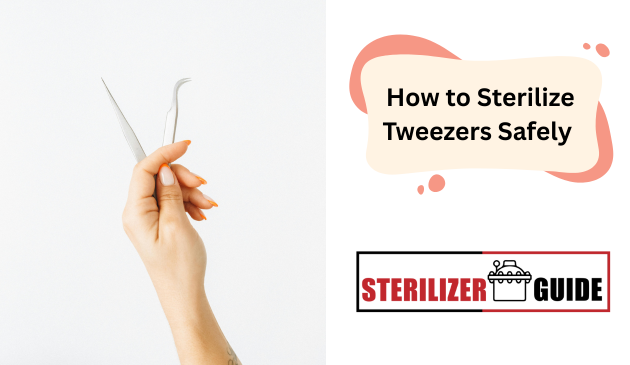Tweezers are small but powerful tools. You use them to shape brows, remove splinters, or treat small wounds. But did you know dirty tweezers can be dangerous? Even one use can spread dirt, oil, and bacteria.
This is risky, especially near your eyes, face, or cuts. That’s why cleaning and sterilizing your tweezers is so important. It helps prevent irritation, infection, and germs.
In this guide, you’ll learn safe ways to clean and sterilize tweezers at home. We’ll show you how to do it with alcohol, boiling water, a lighter, and more. Whether you’re into beauty or first aid, this guide will help keep your tools and your skin safe.
What’s the Difference Between Cleaning, Disinfecting, and Sterilizing Tweezers?
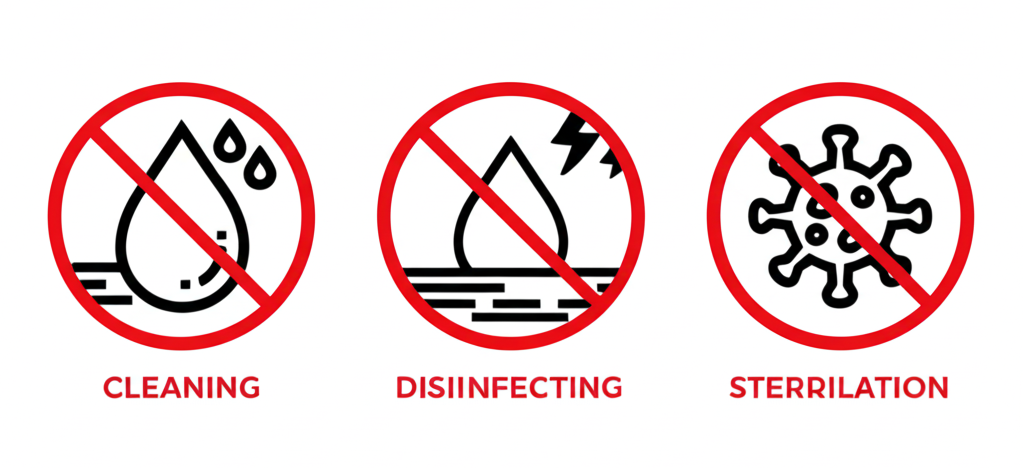
Before you dive into the process, it’s important to understand the key differences between cleaning, disinfecting, and sterilizing tweezers. Each serves a unique purpose and depending on how you use your tweezers, one method may be more appropriate than another.
Cleaning
Cleaning is the first and most basic step. It involves removing visible dirt, oils, or debris from the surface of your tweezers, typically using soap and water. While this process makes your tweezers look clean, it doesn’t kill germs or bacteria.
✅ When to clean: After every use, especially if tweezers are used for cosmetic or grooming purposes.
Disinfecting
Disinfecting goes a step further. It kills many (but not all) bacteria and viruses on the surface of your tweezers. This is typically done with rubbing alcohol (70% isopropyl alcohol or higher) or a disinfectant spray.
✅ When to disinfect: When tweezers come into contact with skin, body fluids, or after cleaning.
Sterilizing
Sterilization is the most thorough method. It involves completely eliminating all forms of microbial life, including bacteria, viruses, and fungal spores. Methods like boiling, using alcohol, or flame sterilization fall into this category.
✅ When to sterilize: For medical use, first aid, or any instance where absolute cleanliness is essential (e.g., splinter removal or post-surgical care).
| Method | Removes Dirt | Kills Bacteria | Kills All Microbes | When to Use |
|---|---|---|---|---|
| Cleaning | ✅ | ❌ | ❌ | Everyday grooming use |
| Disinfecting | ✅ | ✅ | ❌ | After skin contact, cosmetic use |
| Sterilizing | ✅ | ✅ | ✅ | Medical, first-aid, or high-risk usage |
How to Clean Tweezers (Basic Cleaning)
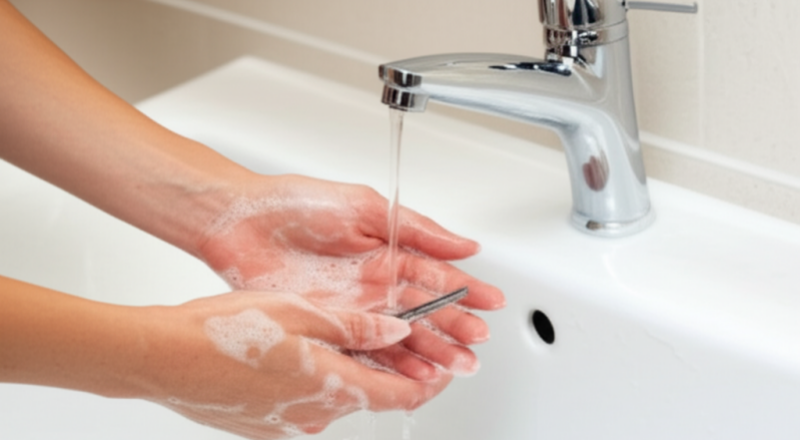
Cleaning is the essential first step before moving on to disinfection or sterilization. Even if your tweezers look clean, they can still harbor unseen oils, dirt, or skin residue, especially if you use them frequently for grooming or personal care.
Here’s a simple method to clean tweezers thoroughly at home:
🛠️ What You’ll Need:
- Warm water
- Mild dish soap or antibacterial soap
- A soft toothbrush or small brush
- A clean towel or paper towel
Step-by-Step: How to Clean Tweezers
- Prepare Soapy Water
Fill a small bowl with warm water and add a few drops of mild dish soap. Mix until it becomes sudsy. - Soak the Tweezers
Submerge your tweezers in the soapy water and let them soak for about 5–10 minutes. This helps loosen any gunk or buildup. - Scrub Gently
Use a soft toothbrush or nail brush to scrub all surfaces of the tweezers, especially the tips. Be thorough but gentle to avoid damaging the metal. - Rinse with Clean Water
Rinse the tweezers under warm running water to remove all soap residue. - Dry Completely
Pat dry with a clean towel or paper towel. Ensure the tweezers are fully dry before storing or moving on to disinfection or sterilization.
💡 Pro Tip: Never store tweezers while they’re still wet. Even stainless steel can rust over time if not dried properly.
How to Disinfect Tweezers Safely
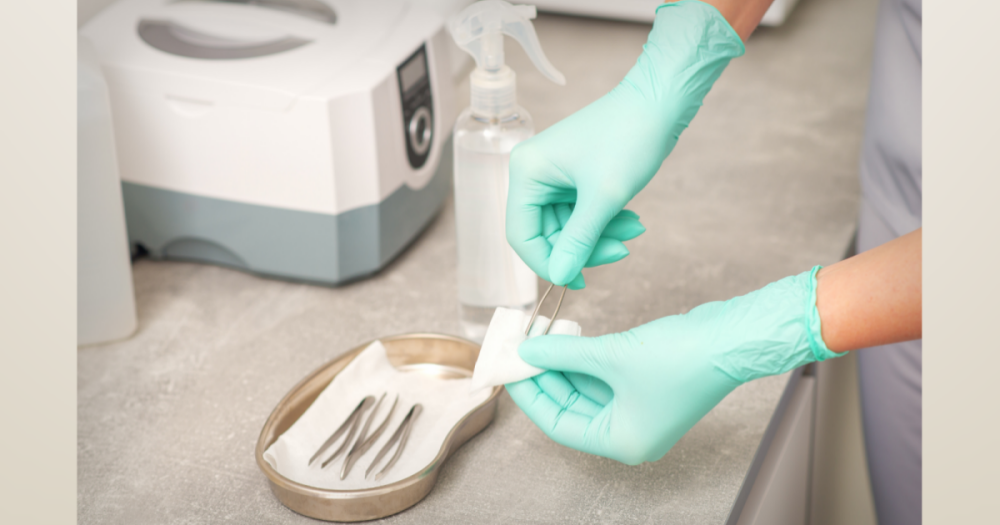
Once your tweezers are clean and free of visible debris, the next step is disinfection. Disinfecting kills most bacteria, viruses, and fungi that may remain on the surface, making it a crucial part of proper tweezer hygiene, especially if they come into contact with skin or bodily fluids.
🛠️ What You’ll Need:
- 70% or higher isopropyl alcohol (rubbing alcohol)
- A small glass or bowl
- Clean cotton pad or tissue
- Optional: Spray bottle (for quick disinfecting)
Step-by-Step: How to Disinfect Tweezers
Method 1: Soaking
- Pour alcohol into a small bowl
Use just enough to fully submerge the tweezers. - Soak the tweezers
Let them sit in the alcohol for at least 10 minutes to ensure effective disinfection. - Remove and air dry
Use clean tongs (or washed hands) to remove them and place on a sterile paper towel. Allow them to air dry completely.
Method 2: Spray and Wipe (Quick Disinfecting)
- Spray alcohol directly on the tweezers
Cover all surfaces, especially the tips. - Wipe with a sterile cotton pad or tissue
Make sure to clean every crevice. - Let them air dry before use or storage
⚠️ Important: Avoid touching the tips after disinfection. If you do, repeat the process to avoid recontamination.
✅ Best Practice: Disinfect tweezers after every use, especially if you use them on your face, for splinter removal, or shared among family members.
How to Sterilize Tweezers at Home (Deep Cleaning Methods)
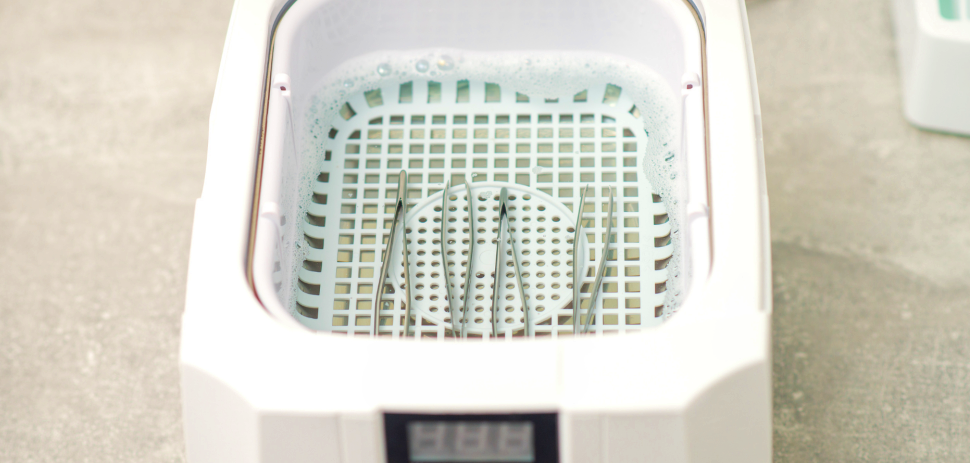
Sterilization goes beyond cleaning and disinfecting, it kills all forms of microbial life, including bacteria, viruses, and spores. While salons and clinics may use autoclaves, you can still achieve effective sterilization at home using simple methods like boiling, alcohol, or direct heat.
Below are three reliable ways to sterilize tweezers at home:
Method 1: How to Sterilize Tweezers with Boiling Water
What You’ll Need:
- Small pot with lid
- Clean water
- Tongs
- Clean towel or paper towel
Steps:
- Bring water to a rolling boil
Fill a pot with enough water to submerge the tweezers and bring it to a boil. - Submerge the tweezers completely
Use tongs to place them into the water. Make sure they are fully submerged. - Boil for at least 10 minutes
This is the minimum time needed to effectively sterilize the metal surface. - Remove with tongs
Carefully remove the tweezers using sterile tongs and place them on a clean paper towel. - Air dry without touching the tips
Let them cool completely before use or storage.
⚠️ Never dry boiled tweezers with a used cloth, it may reintroduce bacteria.
Method 2: How to Sterilize Tweezers with Alcohol
What You’ll Need:
- 90% or higher isopropyl alcohol
- Small container or spray bottle
- Cotton pad (optional)
Steps:
- Soak the tweezers in alcohol for at least 10–15 minutes.
- OR spray thoroughly and allow to sit on a clean surface.
- Allow them to air dry completely before use.
✅ Best used after boiling for double protection.
Method 3: How to Sterilize Tweezers with Lighter or Candle
What You’ll Need:
- A lighter or clean candle
- Tongs (optional)
- Flame-proof surface
Steps:
- Hold the metal part of the tweezers (not the plastic handle, if any) directly in the flame.
- Keep the tip in the flame for 10–15 seconds until it glows slightly or becomes red-hot.
- Allow it to cool completely before using it, preferably on a sterile surface.
⚠️ Only use this method on metal tweezers without plastic parts.
⚠️ Avoid flame sterilization near flammable items like alcohol or hairspray.
How to Clean Tweezers Without Alcohol
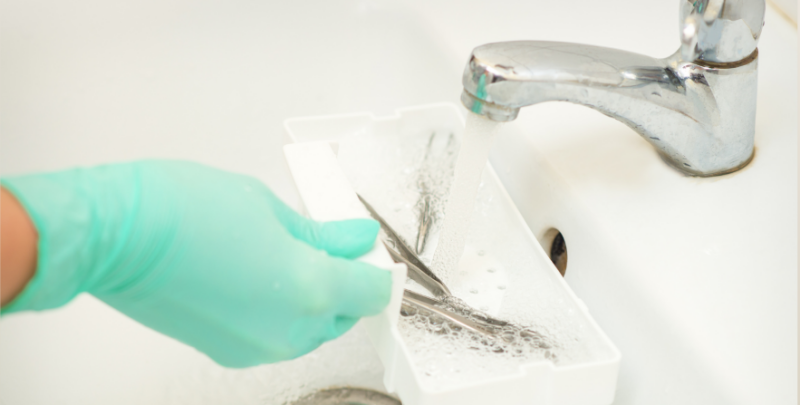
Don’t have rubbing alcohol at home? No problem. While alcohol is one of the most convenient and effective disinfectants, there are still several safe and practical alternatives you can use to clean and even sterilize tweezers without compromising hygiene.
Here are the best alcohol-free methods:
1. Boiling Water (Also Sterilizes)
This is one of the easiest and most accessible alcohol-free methods. As detailed earlier, boiling your tweezers in water for at least 10 minutes kills most bacteria, viruses, and fungi.
✅ Ideal for regular sterilization at home
❌ Not instant – requires time and drying
2. Hydrogen Peroxide (3%)
Hydrogen peroxide is a mild antiseptic and a great alternative to alcohol.
Steps:
- Soak tweezers in hydrogen peroxide for 10–15 minutes
- Rinse with clean water
- Air dry on a clean paper towel
✅ Kills many types of bacteria and viruses
✅ Gentle on metal
❌ Not as fast-acting as alcohol
3. Soap and Hot Water
A good deep cleaning using antibacterial soap and hot water can remove surface-level grime and reduce germs, though it won’t fully sterilize.
Steps:
- Soak in warm soapy water
- Scrub with a toothbrush
- Rinse thoroughly and dry
✅ Quick and easy
❌ Not ideal for medical or high-risk use
4. Vinegar & Baking Soda Solution
This combination has mild disinfecting properties and can be used for general cleaning.
Steps:
- Mix equal parts white vinegar and water
- Add a pinch of baking soda
- Soak tweezers for 10–15 minutes
- Rinse and dry
✅ Natural and non-toxic
❌ Less effective for full sterilization
5. UV Sterilizer Box
If you own a UV sterilizer (often used for phones or makeup tools), you can use it to sterilize tweezers as well.
✅ Touch-free, chemical-free
❌ Requires a UV device
⚠️ Note: While these methods are great alternatives, they may not be suitable for surgical or medical-grade sterilization. Always choose the method based on how you’re using your tweezers.
You may also read: UV Sterilizer Do’s and Don’ts: What Not to Put in UV Sterilizer
Common Mistakes to Avoid When Sterilizing Tweezers
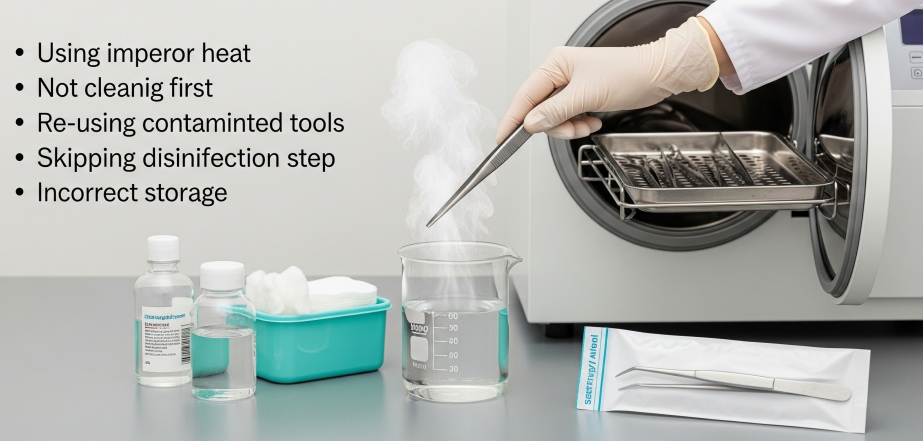
Proper sterilization isn’t just about following steps, it’s also about avoiding common mistakes that can undo all your good work. Even small oversights can lead to cross-contamination or ineffective sterilization, especially when tweezers are used for sensitive tasks like splinter removal, first aid, or facial grooming.
Here are the most common mistakes to watch out for:
1. Skipping the Cleaning Step
Sterilizing dirty tweezers doesn’t work. If there’s any visible debris (like skin, hair, or oil), sterilization will be incomplete. Always clean first, then disinfect or sterilize.
2. Using Dirty Towels to Dry
You just disinfected your tweezers then dried them off with a random bathroom towel. Sound familiar? Unfortunately, even a clean-looking towel can transfer bacteria back onto your tool. Always air dry or use a sterile paper towel.
3. Not Letting the Tweezers Cool After Flame Sterilization
Using hot tweezers can damage skin or cause burns. More importantly, cooling on an unclean surface can undo the sterilization. Let them cool naturally on a clean, sterile surface.
4. Touching the Tips After Sterilizing
This is a surprisingly easy mistake to make. If you handle the tip of the tweezers after sterilizing, especially with bare hands, you’ve recontaminated them. Always handle sterilized tweezers by the base, or use clean gloves or sterile tongs.
5. Using Low-Grade or Diluted Alcohol
Alcohol below 70% isn’t strong enough to kill most bacteria and viruses. Make sure to use at least 70% isopropyl alcohol for effective disinfection or sterilization.
6. Not Sterilizing Between Uses
If you use the same tweezers on multiple people or for different body parts, you must sterilize them between each use. Reusing without sterilizing can spread infections.
✅ Best Practice: Treat your tweezers like a surgical tool if you’re using them near skin, wounds, or sensitive areas. Hygiene always comes first.
How to Store Your Tweezers After Cleaning
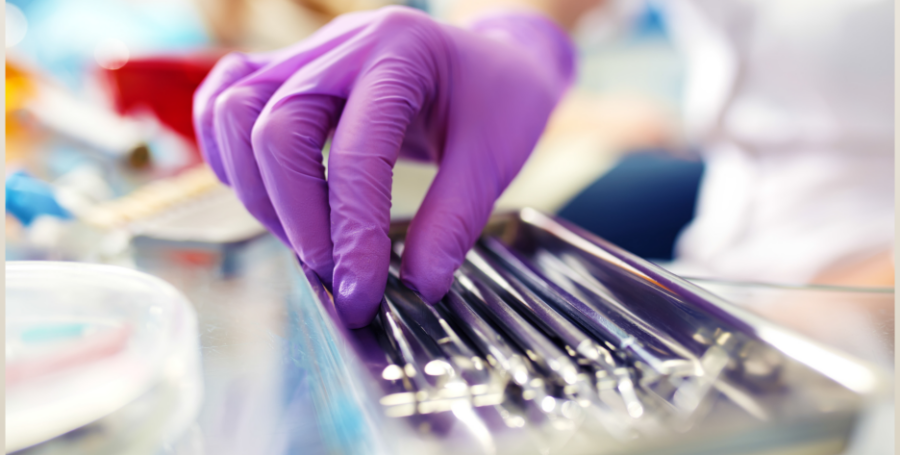
After cleaning and sterilizing your tweezers, storing them properly is important to keep them hygienic. Always keep tweezers in a clean, dry case or pouch to protect them from dust and bacteria.
Avoid storing them in damp places like bathrooms, as moisture can cause rust and germs to grow. If you share tweezers with others, store each pair separately and label them to prevent cross-contamination.
Also, remember to clean the storage case regularly with alcohol or disinfectant wipes. Proper storage helps keep your tweezers ready and safe for use whenever you need them.
Conclusion: Best Practices Recap
Keeping your tweezers clean and sterile is essential for safe and effective use. Clean your tweezers with soap and water after every use to remove dirt and debris. If you use them on skin or wounds, disinfect or sterilize them regularly to ensure they are safe and hygienic.
For everyday grooming, cleaning and disinfecting with alcohol is usually enough. But for medical or high-risk uses, boiling or flame sterilization provides deeper protection. Choose the method that fits your needs and always store your tweezers properly to avoid contamination.
Feel free to bookmark this guide and share it with friends or family who want to keep their grooming tools safe and hygienic!

